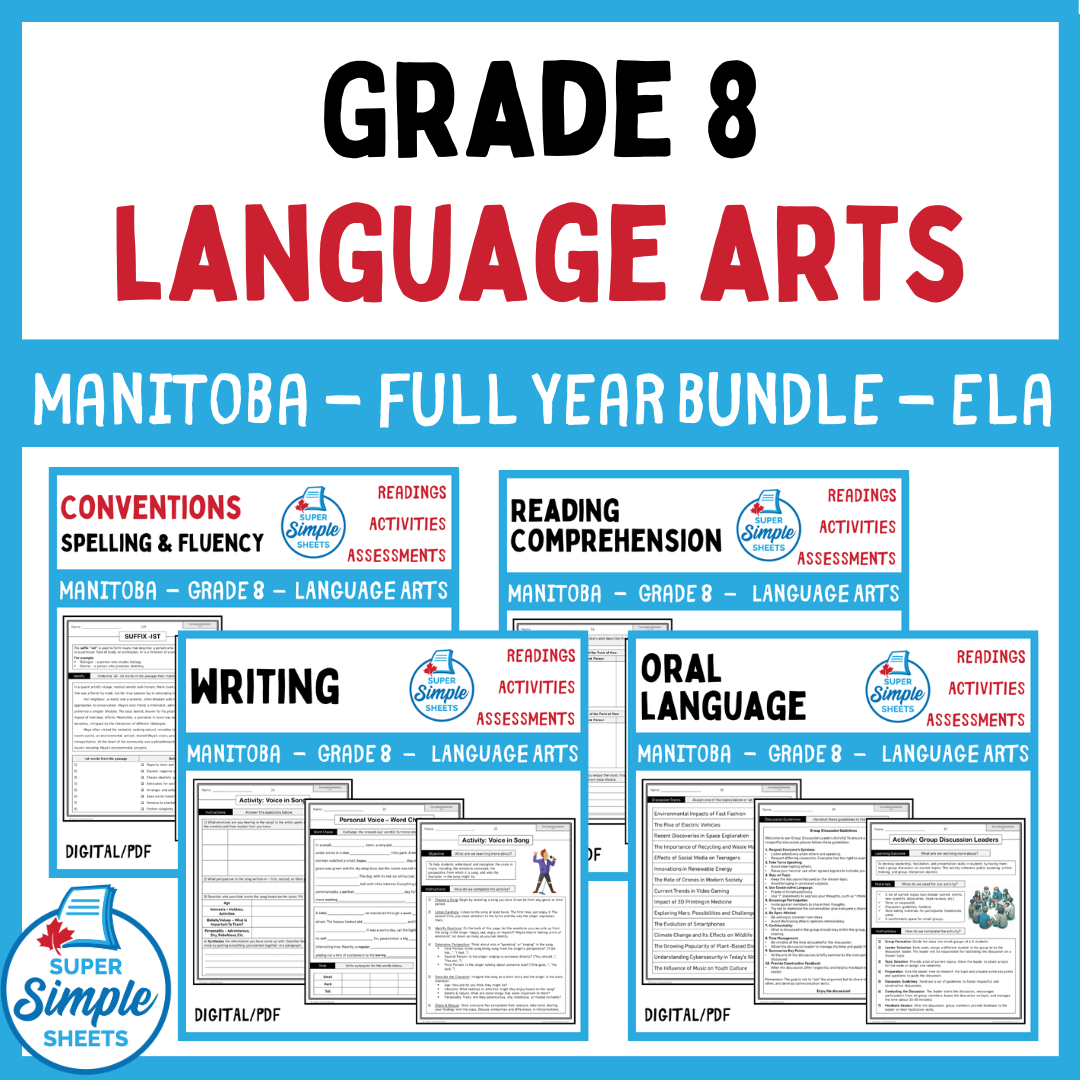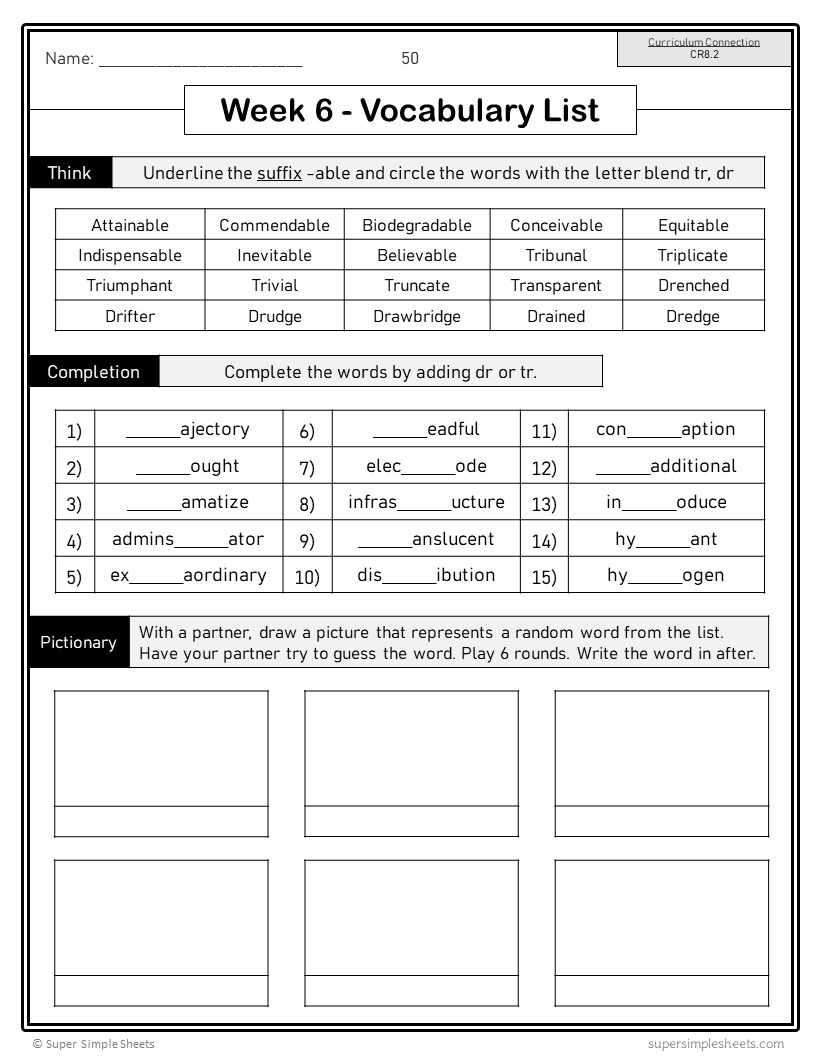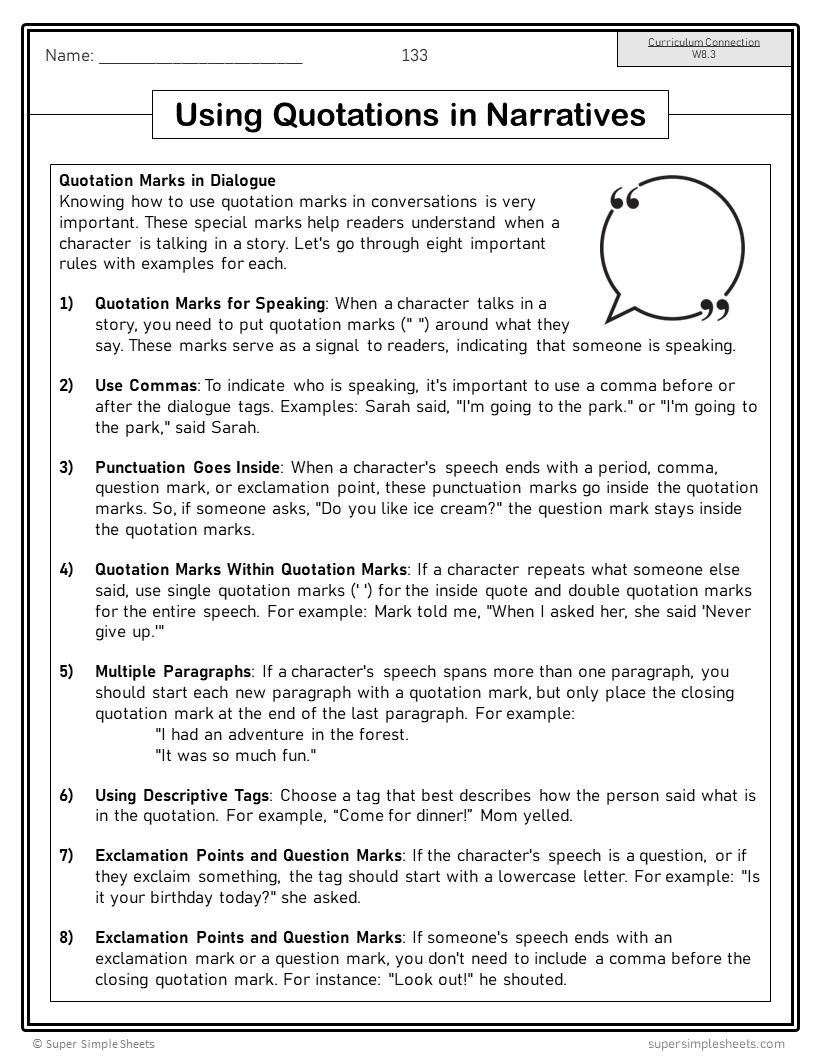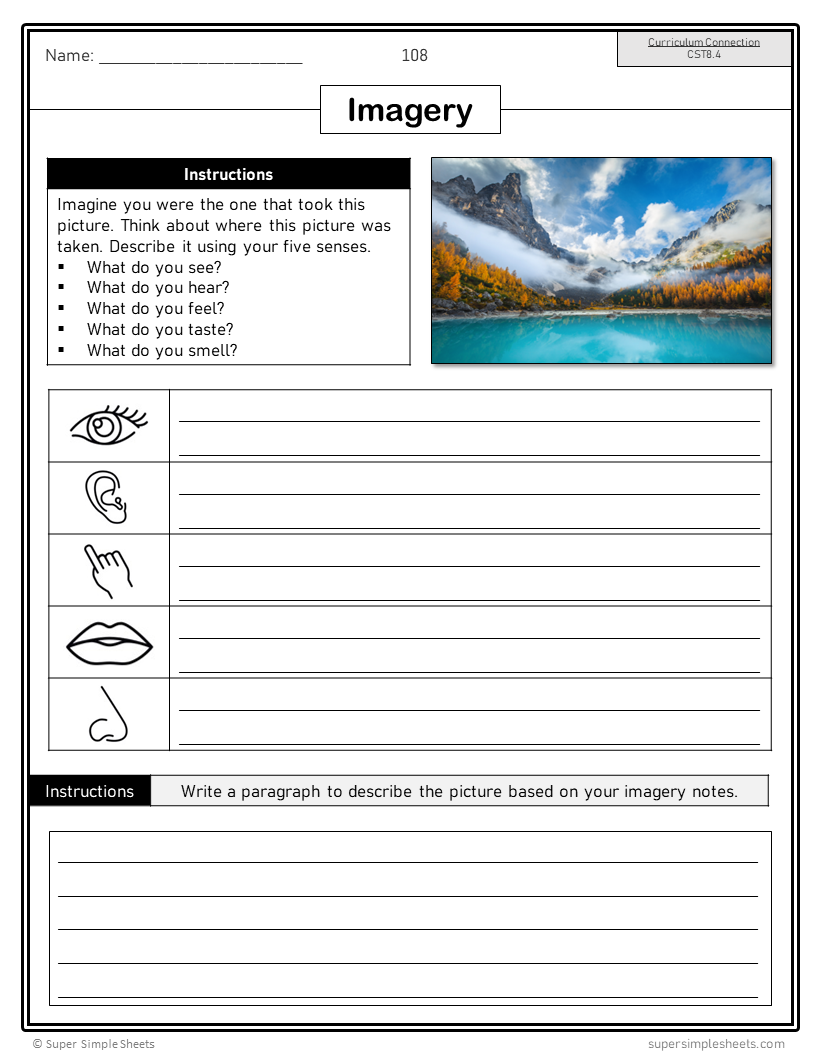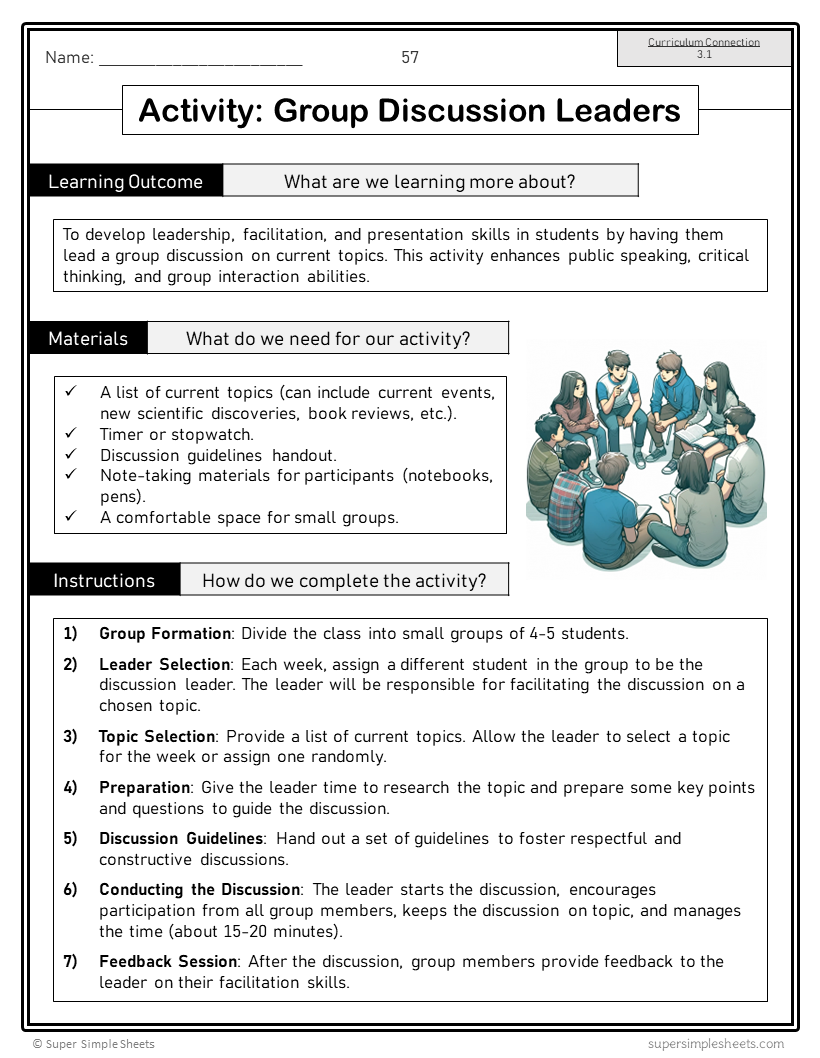Manitoba Grade 8 Language Arts ELA - FULL YEAR BUNDLE
Manitoba Grade 8 Language Arts ELA - FULL YEAR BUNDLE
Interested in a bundle? Shop below instead!
Couldn't load pickup availability
FULL YEAR BUNDLE - Teaching made easy! This NO PREP bundle includes everything you need to teach the Manitoba Grade 8 Language Arts (ELA) Curriculum.
BOTH GOOGLE SLIDES AND PDF VERSIONS INCLUDED!
Grade 8 – Manitoba Language Curriculum (ELA) – Conventions, Spelling, and Fluency. This 447-page resource covers all elements, grade band descriptors, and elaborations related to conventions, spelling, and fluency in the Manitoba Language Curriculum (ELA).
Included in this unit are 30 weeks of ELA instruction, with weekly word lists that explicitly teach a new prefix/suffix each week. Along with these Science of Reading principles, we have weaved in the elaborations students in grade 8 need to learn while working with these word lists.
Included in this resource are the elaborations within the elements below:
Language as Sense Making – using a variety of strategies to understand texts, as well as using different text features to articulate ideas to diverse audiences.
Language as System - spelling, grammar, capitalization, punctuation, fluency/automaticity, and more.
In addition, we have included a full-year long range plan that outlines what concepts from the curriculum you will be teaching each week, and what prefixes/suffixes/letter blends will be covered.
Some of the concepts covered:
- Suffixes: -ing, -ly, -able, -less, -ment, -ful, -ness, -tion, -ous, -y, -ize, -ship and many more
- Prefixes: un-, re-, dis-, pre-, ex-, in-, non-, sub-, inter-, anti-, mis-, super-, and many more
- Reading strategies: predicting, summarizing, making inferences, questioning, and visualizing activities
- Sentence Essentials: Identifying Fragments, Understanding Simple Sentence Construction
- Grammar Foundations: Nouns, Verbs, Adjectives, Adverbs, and Their Roles
- Sentence Expansion: Building Complex Sentences, Avoiding Run-ons
- Advanced Syntax: Crafting Compound-Complex Sentences for Clarity
- Writing Using A Sentence Mix: Simple, Compound, Complex, and Compound-Complex
- Reading Strategies: Questioning, Predicting, Summarizing, Making Inferences, and Visualizing Activities
- Verb Varieties: Mastering "To Be," Linking, and Perfect Tense Forms
- Verb Tenses: Exploring Past, Present, and Future for Strong Writing
- Commands and Questions: Crafting Imperatives and Exploring Interrogatives
- Pronouns in Depth: Types, Roles, and Case Usage
- Enhancing Descriptions: Using Adjectives and Adverbs Effectively
- Gerunds and Infinitives: Expanding Writing with Verbal Nouns
- Voice in Writing: Active Versus Passive Voice, Choosing Effectively
- Noun Functions: Exploring Predicate Nouns and Adjectives in Sentences
- Use Correct Pronoun–Antecedent Agreement In Own Writing
- Phrase Building: Using Adverbial and Prepositional Phrases for Detail
- Using Hyphens – Break Words at the End of Lines and to Make New Words From Two Unrelated Words
- Dialogue Dynamics: Capitalization and Punctuation for Conversations
- Advanced Punctuation: Mastering Colons, Semicolons, Ellipses for Effect
- Using Dashes and Hyphens in Writing
- Use Parentheses Appropriately In Own Writing
- Vocabulary Development: Using Thesaurus for Word Choice and Variety
- Comprehension Techniques: Strategies for Understanding and Analyzing Texts (Reader’s Theatre)
- Expressive Reading: Performance Techniques for Engaging Audiences
- Spelling Variants – Canadian versus American Spelling
- Distinguish between formal and informal conventions of oral and written language
- Formal and informal language – slang, social media texts, academic language
- Reconstructing texts – changing a news article into a short story or a formal text message into an informal one
- Reading with Expression: Developing Fluency, Tone, and Pacing
- Spelling Strategies: Tackling Commonly Misspelled Words and Patterns
- Grammar Proficiency: Ensuring Clear and Correct Communication
- Weekly quizzes (30 different assessments)
- Answer pages for all activities
Grade 8 – Manitoba Language Curriculum (ELA) – Writing. This 441-page resource covers all elements, grade band descriptors, and elaborations related to writing in the Manitoba Language Curriculum (ELA).
There are 441 activity sheets that are aligned to cover the elaborations in the Manitoba Language Curriculum. Included are 10 blocks of content, each covering a different text form. Within each block, the elements, descriptors, and elaborations are taught.
This is a language program developed by a language teacher. We have included exemplars/mentor texts for students to use to formulate success criteria so they can improve their writing quality. Moreover, we’ve scaffolded the skills involved with producing quality writing to ensure all students can progress.
Included in this resource are the elaborations within the elements below:
Language as Sense Making – writing many different text forms, including letters, how-to-guides, reports, stories, etc.
Language as System – writing with proper use of conventions, text features, and structure
Language as Exploration and Design – research skills, constructive feedback, working collaboratively
Language as Power and Agency - expressing opinions, other points of view/perspectives, justice, equity, fairness
Some of the concepts covered:
- Types of text forms – when to use each one (narratives, letters/emails, persuasive, comic strips, reports, etc.)
- Experiment – writing with planning time versus writing without planning time (no brainstorming)
- Activity – Voice in Music
- Personal voice in writing
- Revising writing – adding words/phrases, varying sentence variety, and word choice
- How to write a perfect paragraph – topic sentence (hook), body (supporting details), conclusion
- Essay writing – how to write and identify a thesis statement
- Using paragraph structures to demonstrate unity and coherence
- Writing a 5-paragraph essay
- Formal versus informal letter writing – voice in our writing
- Narrative writing – beginning, middle, end
- Narrative structure – exposition, rising action, climax, falling action, resolution
- Characterization – creating funny, mysterious, fantasy, and adventurous characters
- Character development – describe how characters change over time due to big events
- Writing personal narratives that showcase their identity
- Writing idioms, analogies, imagery, hyperbole, metaphors, and similes
- Main and minor characters – protagonists and antagonists
- Story types – cyclical stories, iterative stories, and linear stories
- Analyzing quality stories – building success criteria
- Using quotations in narrative writing – dialogue
- Activity – Being Persuasive: Debate
- Understanding bias in persuasive writing
- Assignment – advertising a new invention
- Expository text forms – reports, lists, problem/solution report, compare/contrast essay, cause and effect essay
- Writing a How-To-Guide
- Synthesizing multiple reports
- Writing a report – circulatory system and water bodies
- How to research effectively – trustworthy sources, using keywords
- Activity – Online Treasure Hunt
- Writing a problem/solution report
- Types of poems – Haiku, Limerick, Rhyming Poems, Acrostic Poems
- Assignment – writing a poetry children’s book
- Comic strips – onomatopoeia and illustrating graphic texts
- Assignment - creating an online comic strip
- Biographies – cross curricular connections: Marie Curie, John A. Macdonald, and Tecumseh
- How to cite where we find research – bibliography
- Activity – Partner Biography/Bibliography Assignment
- Reconstructing texts – translating texts from one form to another – e.g., letter to news report, infographic to story
- Cursive writing package/booklet
- Answer pages for all activities
Grade 8 – Manitoba Language Curriculum – Comprehension – Language as Sense Making. This resource covers all elements, grade band descriptors, and elaborations related to reading comprehension in the grade 8 Manitoba Language (ELA) curriculum. There are 467 pages for students to master the skills they need to meet the requirements of the curriculum.
We’ve included a variety of activities, including independent reading responses, group activities, assignments, experiments, exemplars, and hands-on activities to keep your students engaged.
Included in this resource are the elaborations within the elements below:
Language as Sense Making – using reading comprehension strategies to read a variety of complex texts
Language as System – understanding the text patterns, features, and structures used within a variety of text forms
Language as Exploration and Design – using research skills to extend understanding of texts
Language as Power and Agency - investigating social issues, moral dilemmas, and social justice
In addition, we have included a full-year long range plan that outlines what concepts from the curriculum you will be teaching each week/block.
Some of the concepts covered:
- How techniques like word choice, fonts, and layouts affect texts
- What is reading comprehension? What strategies work for me?
- Comprehension Practice – Refocusing / Re-engaging
- Indigenous Storywork – 7 Principles: respect, responsibility, reciprocity, reverence, holism, interrelatedness, synergy
- Bias in letter writing, book reviews, and in persuasive writing
- Making inferences from letter writing
- Narratives – finding examples of literary devices: irony, allusion, and satire
- Analyzing first-person, second-person, and third-person narratives
- Analyze the decision making of characters
- Drama stories – round and flat characters
- Sequencing a narrative with multiple plots – rearranging plot events
- Narrative structure – exposition, rising action, climax, falling action, resolution
- Story structures: linear, cyclical, and iterative stories
- Story – Character Identification And Comparison
- Characterization – character traits, decision making, and evolution of characters
- Determining the causes and effects in narratives
- Implicit versus explicit evidence in persuasive texts
- Expository texts – informational reports and how-to-guides
- Text patterns in blog posts
- Propaganda – Critical Analysis
- Synthesizing multiple reports and essays
- Report – Justice, Equity And Fairness
- Scanning texts looking for specific information for research
- Study strategy: read, recite, and review
- Five paragraph essays – text patterns and features
- Problem and solution letters
- Identifying thesis statements found in reports and essays
- Identifying literary devices in poetry – irony, hyperbole, simile, metaphor, allusion, and satire
- Analyzing poems – haiku, limerick, acrostic, cinquain, and rhyming poetry
- Studying poetry written by Indigenous authors
- Explicit and implicit perspectives in book reviews
- Activity – detecting bias in online reviews
- Book review – choose favourite author and compare the texts they have written
- Graphic texts – timelines, memes, comics, infographics, maps
- Visual/graphics – Illustration styles: realism, cartoon, sketch, outline
- Biographies – Samuel de Champlain, Tom Longboat, Alexander Graham Bell, Joan Chalmers, Norval Morrisseau
- Metacognitive strategies: reading tracking charts and reading goals
- Answer pages for all activities
Grade 8 – Manitoba Language Curriculum (ELA) – Oral Language. This 135-page resource covers all elements, grade band descriptors, and elaborations related to oral language in the Manitoba Language Curriculum (ELA).
Included in this unit are 37 activities that are interactive and engaging for grade 8 students. As students complete the activities, they will build on their oral communication skills, obtaining the learning standards stated in the curriculum. There are several activities provided for each elaboration listed in the curriculum.
We are proud to include everything you need to complete these activities. For example, if an activity asks for a story to be read, we provide the story. We’ve also included all emotions, story starters, expressions, and plays (reader’s theatre) you need.
Included in this resource are the elaborations within the elements below:
Language as Sense Making – tailoring presentations and oral communication for their audience and purpose
Language as System – reading with expression, comparing texts, discussing different forms of texts
Language as Exploration and Design – using creativity to reconstruct texts into new forms
Language as Power and Agency - expressing opinions, other points of view/perspectives, justice, equity, fairness
Some of the concepts covered:
- Activity: Feedback Circle
- Activity: Interactive Q&A Sessions
- Activity: Open-Ended Question Challenge
- Activity: Presentation Rehearsals with Peer Feedback
- Activity: Audio Story Analysis
- Activity: Listening Journal Reflection
- Activity: Two Truths and a Lie - Listening Edition
- Activity: Perspective Exchange Discussions
- Activity: Respectful Response Role-Play
- Activity: Idea Gallery Walk
- Activity: Perspective Shift Debate
- Activity: Discussion Circles
- Activity: The Social Justice Web
- Activity: Audience Analysis Activity
- Activity: Impromptu Speeches
- Activity: Group Discussion Leaders
- Activity: Vocabulary Scavenger Hunt
- Activity: Story Circle Paraphrase
- Activity: Grammar and Syntax Workshop
- Activity: Pass the Story
- Activity: Opinion Beach Ball
- Activity: Readers' Theatre - Poetry Performance
- Activity: Mood Mirroring
- Activity: Emotion Waves
- Activity: Nonverbal Communication Game
- Activity: Emotion Charades
- Activity: Cultural Communication Exploration
- Activity: Collaborative Mind Maps
- Activity: Feedback Incorporating Activity
- Activity: Classroom Teach-Back
- Activity: Targeted Presentation Project
- Activity: Community Helpers and Their Challenges
- Activity: Presentation Breakdown
- Activity: Guest Speaker Analysis
- Activity: Role-Playing Scenarios
- Activity: Debate Club
- Activity: The Great Debate
This is a comprehensive bundle that will save you hours of planning! It has everything you need to feel confident that you are covering the Manitoba Language Arts curriculum.
Share
